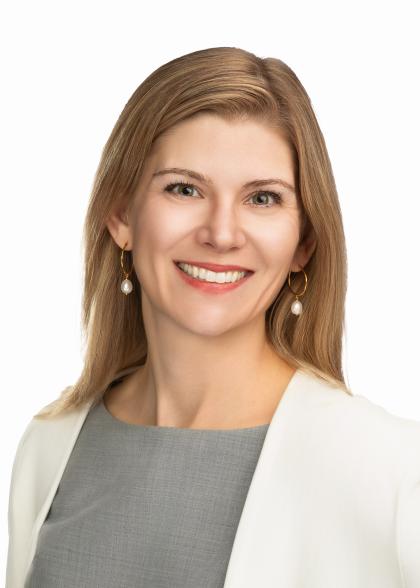Dedicated to strengthening the health, safety, and independence of Idahoans.
Message from Director Juliet Charron
It is an honor to serve as director of the Department of Health and Welfare. Our mission is simple yet profound: to strengthen the health, safety, and independence of Idahoans. Every day, our work touches lives across the state—whether through child welfare, Medicaid, behavioral health, public health, or the many other services that help people in times of need.
Having focused my career on health and human services across three states, I often think of these important programs as a larger ecosystem. The programs the department administers are large, complex, and interdependent in ways that not everyone sees until something shifts. That is why collaboration, transparency, and accountability are vital.
With nearly 3,000 employees and an annual budget of just over $6 billion, DHW carries both great responsibility and great opportunity. My commitment is to support our staff, honor taxpayer trust, and keep families and communities at the center of all we do.
I look forward to the work ahead and to building a stronger, healthier Idaho together.
Agency overview
Role in the Community
The Department of Health and Welfare’s (DHW) primary role in the community is to provide services and oversight to promote healthy people, safe children, and stable families. DHW accomplishes this through several core functions, including:
- Protecting children and vulnerable adults
- Administering state and federal public assistance and health coverage programs, which includes Supplemental Nutrition Assistance Program (Food Stamps) and Medicaid
- Providing direct-care services for certain disadvantaged or underserved populations
- Licensing various types of care facilities
- Promoting healthy lifestyles
- Identifying and reducing public health risks
Leadership
DHW serves under the leadership of Idaho Governor Brad Little. DHW Director Juliet Charron oversees all department operations and is advised by the Idaho Board of Health and Welfare. The board consists of seven voting members appointed by the governor as well as the chairmen of House and Senate Health and Welfare legislative committees. The DHW director serves as the secretary.
Organization
Idaho is a leader in the integration of service delivery for health and human services. In some states, health and human services is divided into several departments with separate administrations. Idaho is fortunate to have these services under one umbrella with a single administration. This is not only cost-effective, it allows DHW to more effectively coordinate services for struggling families, so they can achieve self-sufficiency without government support. The director manages DHW's business with a leadership team including four deputy directors, a chief financial officer, a chief of staff, and eleven division administrators. Each deputy director is responsible for the oversight and coordination of one of four areas:
- Child, Youth, and Family Services
- Health and Human Services
- Medicaid
- Operations
DHW's eleven divisions include:
| Division | Administrator |
|---|---|
| Behavioral Health | Ross Edmunds |
| Community Partnerships | Laura Denner |
| State Care Facilities | Alison Tate |
| Financial Services | Misty Lawrence |
| Information and Technology Services | Alvino Artalejo, Interim |
| Licensing and Certification | Laura Stute |
| Management Services | Staci Phelan |
| Medicaid | Sasha O'Connell |
| Public Health | Elke Shaw-Tulloch |
| Self-Reliance | John Bernasconi |
| Youth Safety and Permanency | Jean Fisher |
Each division contains individual bureaus and programs that provide services to help people in communities.
View the current DHW organization chart.
Psychiatric Hospitals and treatment center
DHW administers the state’s three psychiatric hospitals, State Hospital North, State Hospital South, and State Hospital West. State Hospital North and South provide treatment for people who have been court-ordered into the state’s custody. State Hospital West provides treatment for adolescents, ages 11-18.
DHW also administers the Southwest Idaho Treatment Center (SWITC), which serves individuals with complex and challenging behaviors.
Locations and Authorized Positions
DHW operates in 38 locations, of which 32 are publicly accessible throughout the state. In addition to field and administrative offices, DHW also operates visitation and counseling offices, state institutions, and the state laboratory. There were 3,015 authorized full-time employees in Fiscal Year 2025.
